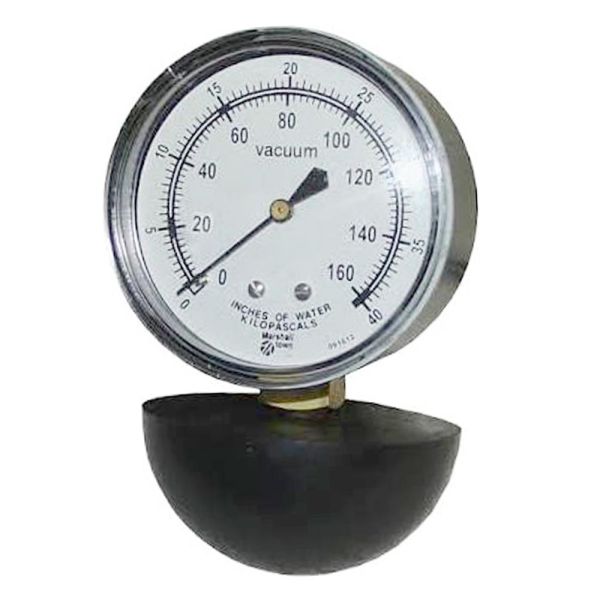Guide to Understanding Vacuum Cleaner Specifications
Welcome to Think Vacuums, with over 35 years of expertise in the vacuum industry, we understand that selecting the right vacuum cleaner can be a challenging endeavor, especially when faced with various specifications and technical jargon.
To help you make an informed decision, we’ve broken down the key specifications that impact a vacuum cleaner's performance across different types, including Central Vacuum Systems, Household Vacuums, and Commercial Vacuums. Let’s dive into what these terms mean and how they relate to your cleaning needs.
Key Specifications of Vacuum Cleaners
Watts
The wattage of a vacuum cleaner refers to the input power of its motor. While this number gives an idea of the motor's potential power, it doesn’t account for the motor's efficiency or the vacuum's overall design.
- However, higher wattage usually indicates a stronger motor, which can translate to better suction power.
This specification is crucial for both Household and Commercial Vacuums, where robust performance is necessary for efficient cleaning across different surfaces.
Amps
Amperage is one of the most common specifications you'll encounter. It refers to the total electrical current used by the vacuum cleaner when all its components are operating, including the motor, power nozzle, and any lights.
- The higher the amps, the more powerful the vacuum can potentially be.
However, keep in mind that most household outlets support up to 12 amps, which is the upper limit for most Household Vacuums. For Central Vacuum Systems, amperage ratings can vary, but the systems are designed to deliver high performance without overwhelming standard electrical circuits.
Voltage
In the U.S., standard household voltage is typically around 120 volts. While some may refer to this as "110" due to potential drops in voltage through home wiring, appliances are designed to function efficiently within this range.
- Therefore, voltage is less of a concern when choosing a vacuum, as most are built to accommodate this standard.
This is consistent across Household, Commercial, and Central Vacuum Systems, ensuring reliable performance in various settings.
Water Lift (Sealed Suction)
Water lift, or sealed suction, measures the vacuum's ability to lift debris from surfaces. This specification is crucial for vacuums tasked with picking up heavier particles like sand or dirt.
- A higher water lift value indicates a vacuum's proficiency in handling resistance and effectively removing debris from carpets and floors.
For Central Vacuum Systems, high water lift is essential to cover large areas and reach deep into carpet fibers.
Airflow
Airflow, measured in cubic feet per minute (CFM), is arguably the most critical specification for assessing a vacuum's cleaning prowess. It represents the force generated by the airflow across surfaces, which is responsible for lifting and transporting dirt into the vacuum's dust bag or container.
- A higher CFM generally means better cleaning performance, as more airflow equates to more efficient dirt pickup.
This is particularly important for Commercial Vacuums, which need to maintain high performance over extended periods.
Tips for Evaluating Vacuum Cleaner Specifications
When evaluating vacuums based on these specifications, consider the following practical tips:
- Focus on Airflow and Suction: While wattage and amps indicate potential power, airflow and water lift are more directly related to cleaning performance. Look for models with high CFM and water lift ratings.
- Consider Your Cleaning Needs: If you have thick carpets or pets, opt for a vacuum with strong suction and airflow capabilities to tackle stubborn dirt and pet hair.
- Don't Be Swayed by High Wattage Alone: A high-wattage vacuum isn't necessarily the best choice. Ensure it also has efficient airflow and suction capabilities.
- Check for Versatility: Ensure the vacuum you choose can handle the different surfaces in your home, from hardwood to carpet, with appropriate attachments.
Applying Specifications Across Different Vacuum Types
- Household Vacuums: These models are typically smaller and designed for regular home use. Pay attention to specifications like water lift and airflow to ensure they meet your specific household needs.
- Commercial Vacuums: Built for durability and efficiency, these vacuums require strong motor power and high airflow to withstand frequent use in larger spaces.
- Central Vacuum Systems: Offering powerful cleaning capabilities, these systems rely heavily on water lift and airflow to provide effective whole-house cleaning solutions.
Making an Informed Decision
At Think Vacuums, we're committed to helping you navigate the world of vacuum cleaner specifications with confidence. By understanding these key aspects, you can choose a vacuum that meets your specific cleaning needs and delivers optimal performance. Whether you're considering a Central Vacuum System for seamless integration or a Commercial Vacuum for robust cleaning power, we've got you covered with our wide selection of top-rated vacuums and accessories. Contact us today and let us help you find the perfect vacuum for your home or business.





Log In
Create New Account